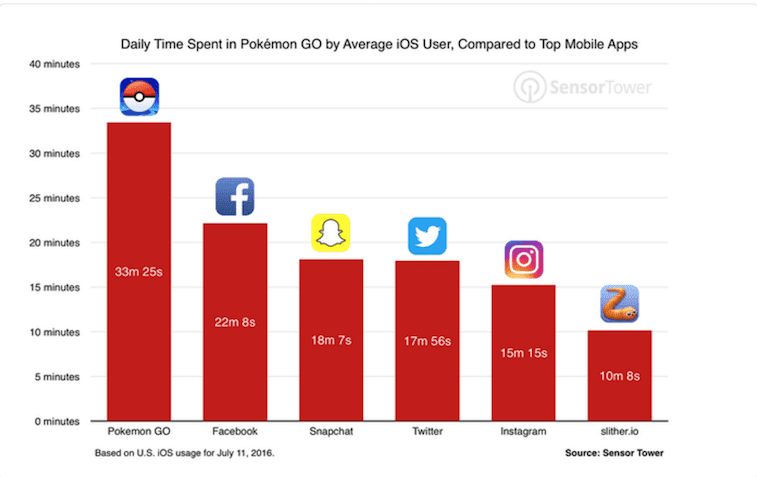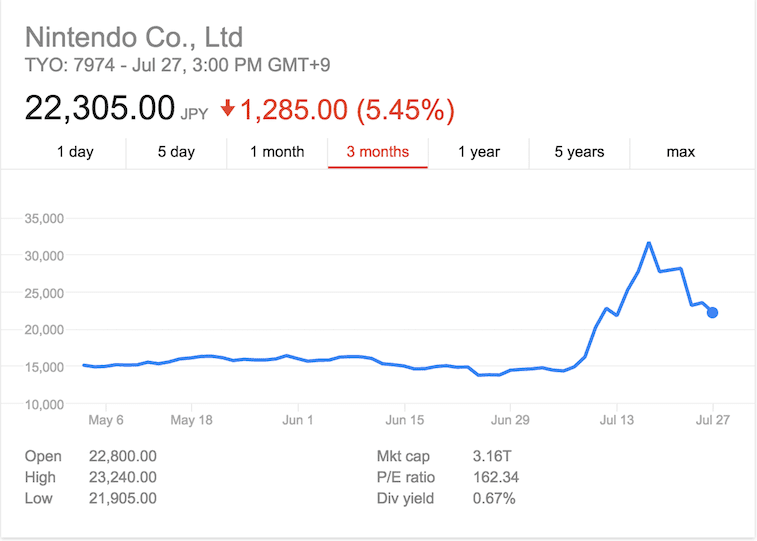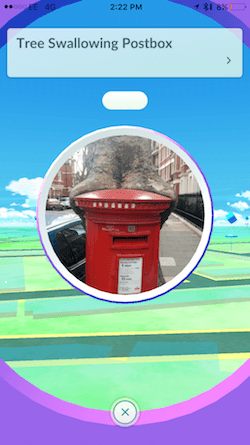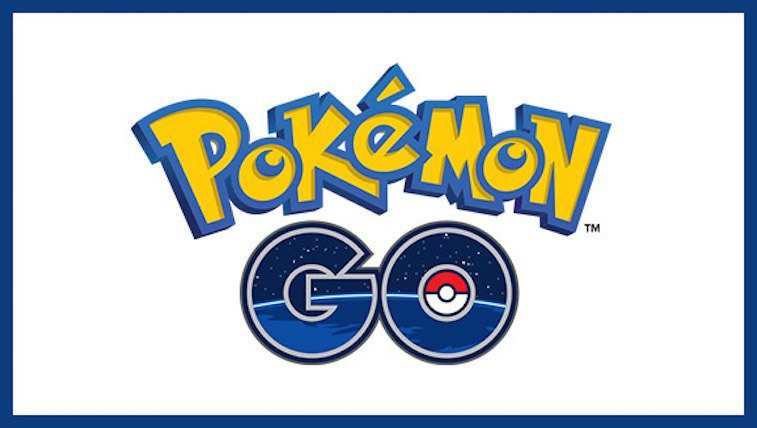By now, you’ve surely heard of the Pokemon Go (PG) craze, right? If you haven’t, I suspect that means that (a) you’ve been on holidays in the boondocks, (b) you don’t have kids or (c) perhaps you snub all things digital? In any event, twenty days into its launch, Pokemon Go is already legendary!
 It’s now available in 30 countries and has been downloaded, at last count, an estimated 75 million times (source). As the graphic from Sensor Tower above shows, Pokemon Go has captured hearts, minds and user time. The Nintendo stock price soared 75% initially, although it has since taken some significant profits (as in, given half back when it was uncovered that Nintendo only had a 32% interest in the game!). See below.
It’s now available in 30 countries and has been downloaded, at last count, an estimated 75 million times (source). As the graphic from Sensor Tower above shows, Pokemon Go has captured hearts, minds and user time. The Nintendo stock price soared 75% initially, although it has since taken some significant profits (as in, given half back when it was uncovered that Nintendo only had a 32% interest in the game!). See below.

For myself, I have eked out a Level 7 and have yet to win a Gym Battle… which about says it all for my Pokemon Go credentials. However, I have observed and examined some elements of this phenomenon.
What explains the success of Pokemon Go?
For me, I explain the success in the following manner:
The company surfed on a great underlying brand, using a new technology (Augmented Reality) in a fundamentally useful manner, leveraging other digital assets and tools (Google Earth, mobile, geolocation) to create a digital game that includes activity (walking), social (mingling, teams) and discovery (learning new locations, plaques). All in all, even parents have to approve of all that! Of course, there’s also the well-plied core loop that keeps you coming back for more, too! By the way, you can’t drive around (i.e. instead of walking) to the destinations, because the tracker knows if you are travelling over 20kph (or 12mph) and driving at that speed is generally not safe.
Pokemon Go is a success because it's a video game that encourages activity, socialization and learning. Click To Tweet
Thanks to PG, I stopped and actually saw how the postbox has merged…
Implications for business
Will PG die as fast as it came or will it became a steadfast titan in gaming? I certainly don’t know, but I would not bet against it staying for a good long time. That said, to believe that Pokemon Go came out of thin air would be wholly illusory. Its success is also the story of trial and error, learning from the past and an experienced team. Digital Games are naturally not the same as typical corporate products and services; however, here are some things that are worth knowing about this craze from a business/brand angle.
- Marketing is in the Experience. You don’t need to spend heavily on traditional marketing to make a massive worldwide success. It has been reported that the company barely did any advertising. I certainly saw none. It started with seeding with gamers, making for a super easy download, providing a great user experience as well as something “to write home about,” bragging rights included. However, if normal businesses can’t be adopting the same marketing concepts exactly, the opportunity is to figure out and deliver an amazing your brand experience! Brian Solis is one to talk about that!
- Innovation network. You definitely need a great product. Innovation comes in many forms and PG would not work to this extent if the User Experience were not so exceptional. Alphabet (parent of Google) has had a part in this initiative, since it used to own Niantic, the developer responsible for the game. Alphabet spun it off last autumn, but has retained an undisclosed share of the company. Proof that you need to keep a strong innovation stream and keep your fingers in the digital pie!
- Convergence. The new world of digital succeeds best when marrying offline and online. It also, often, requires mixing and matching different technologies. Whether or not Pokemon Go survives for all ages, the point is that PG is in its core both digital and real life. That is what Augmented Reality means. Moreover, by linking real life monuments and addresses (the founder of Niantic also was part of the founding team that created Google Earth), the game takes advantage of a slew of digital assets and tools: smartphone, geolocation, AR, Google Maps…. In other words, it's about thinking openly, collaboratively and across technologies. Click To Tweet
- Localization. As a business, have you considered how can you take advantage of this trend? Call it a fad, perhaps, but it would be the equivalent of “newsjacking” a hot news topic. Any business with a retail presence would be a fool not to investigate the Pokéstops and or Gyms in the vicinity. It's necessary to be so much more aware, agile and creative in our marketing activation. Click To Tweet
- Contingency Planning. When you launch a digital product, you need to be strategic about the follow-on phases. Too many times, digital projects are launched because of the NSO “next shiny object” syndrome and no resources, followup or contingency planning have been factored in.
- Learn by Doing. Executives and, especially Marketing people, need to play the game — go out and try it — rather than just read about it. It’s part of upping one’s digital IQ, although you won’t feel the smarter for it per se. The point is to get into the user’s shoes and understand the usages.
- The Pokemon brand had residual love that the PG game tapped into with legitimacy and authority. By using a legacy brand name, it will appeal to those who are nostalgic about the “old days” of gaming. The key concept is to make sure you stay authentic to your roots.
- Data and Insights are a treasure trove when well used. The underlying data from Google was clearly useful in the creation of the PG map — the Pokéstops (monuments and plaques…) were scored according to the geo-tagged image uploads on Google (Marie Goldstein). Moreover, Niantic is surely getting access to a lot of user information and data that will be useful for its future developments and marketing strategy.
- Personalization works. Making the avatar your own is a key to adoption. Not only do I have my own avatar, though, I belong to a team (Yellow) and, yet, have my own personal experience. When I earn a Pokemon, I won’t get the same value (CP) as the person next to me with the same pokemon. How do I know that? I socialized with a person beside me in the street!
- Technology is important. Bugs (not Pokemons in this case) are a real and strategic component of a digital initiative. It’s like saying you have free wifi, but the access is debilitatingly slow (cf Eurostar). The centralized server system running the game has had several meltdowns, costing the game a major hiccough in its launch trajectory. Two other elements are important to consider: data downloading efficiency (not to make all the users drain and wipe out all their data plans) and battery life (where the mobile phone’s battery goes from 100% to 0% within a couple of hours of constant usage). There are some tips to avoid battery depletion, but basically, you had better keep a spare battery pack if you plan to go and about!
- Watch out for Cyber Security. It is said that a hacker group, PoodleCorp, is threatening to take down Pokémon Go on August 1st — proof that cyber security is a real business consideration as well Click To Tweet
- Finally: Emotion. Make your brand fun. Tap into emotions. Include learning, surprises, discovery…. All great ways to engage your audience.
Pokemon Go is bound to have a good long ride since the development team already has plans for further stages of discovery and new functionality. For example, they are talking about the ability for users to “fight” each other. Surely, the monetization process will be a tricky process to manage without killing the user experience. However, based on the merchandising alone, I am sure Nintendo will make a killing.
So, what other business lessons do you think Pokemon Go could provide for you? Which ideas above speak to you most? Please comment and let me know your thoughts!












Trackbacks/Pingbacks